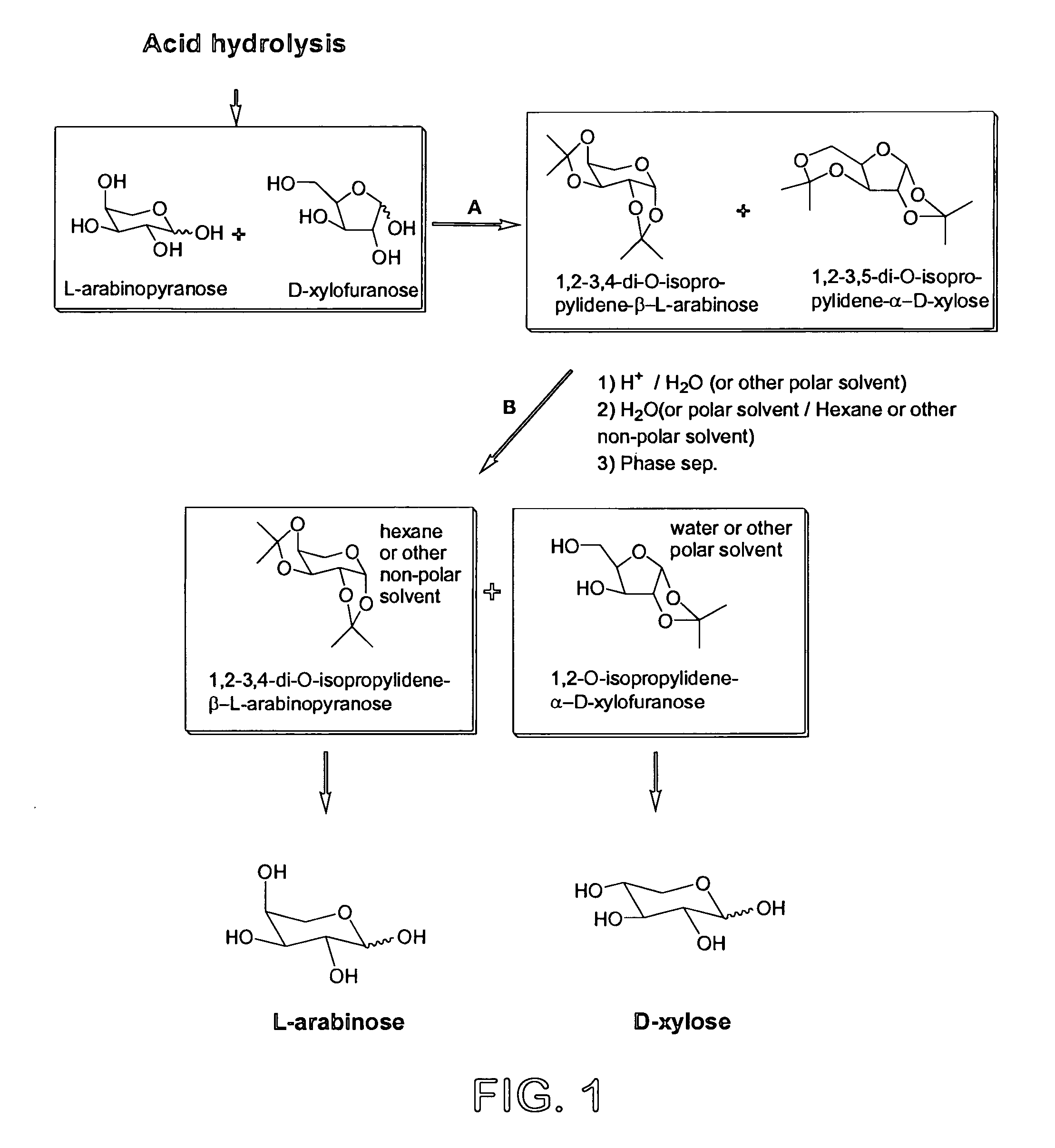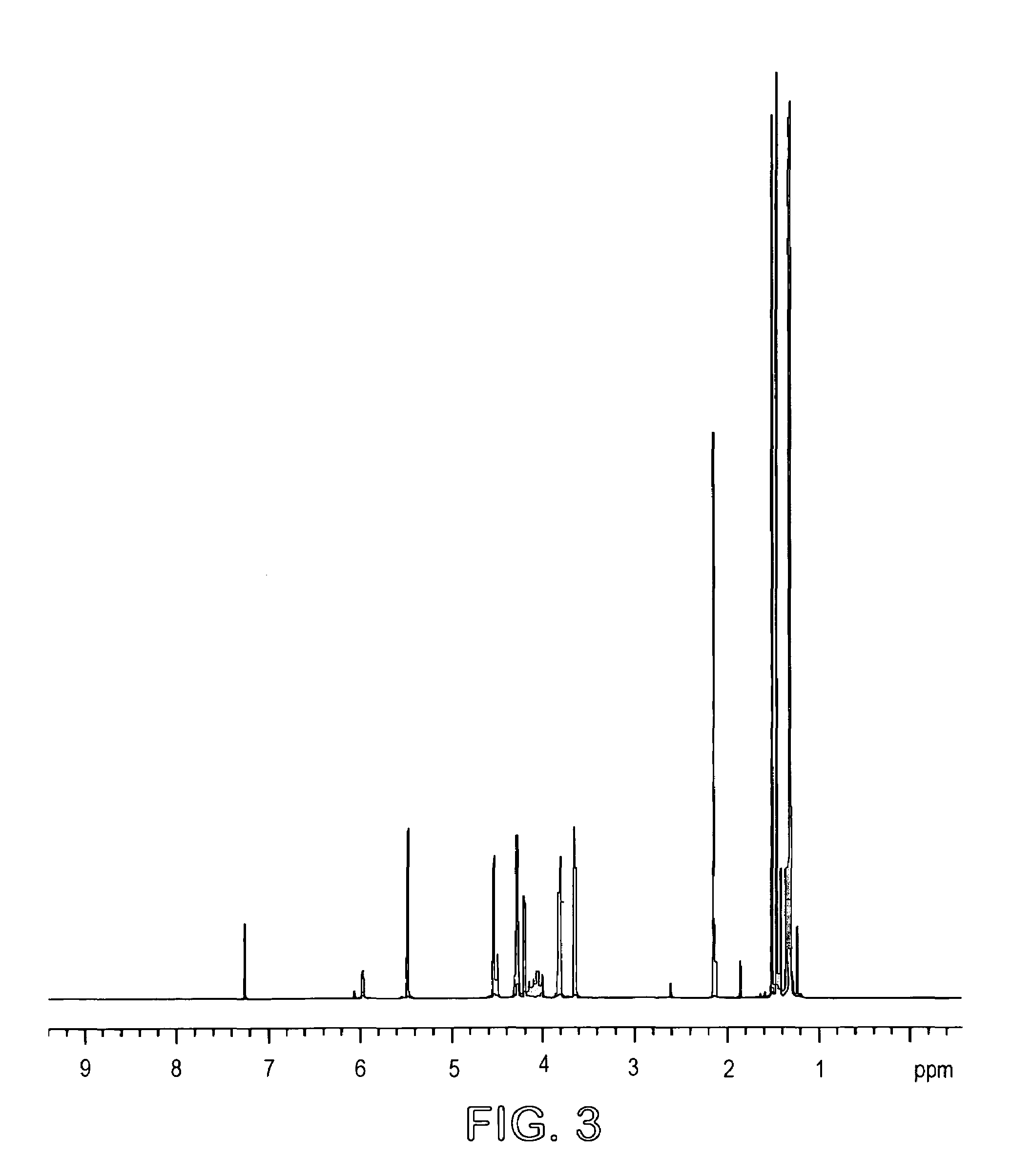Process for the preparation and separation of arabinose and xylose from a mixture of saccharides
a technology which is applied in the field of preparation and separation of arabinose and xylose from a mixture of saccharides, can solve the problems of separation of the resulting monosaccharides, and achieve the effect of preventing the hydrolysis of acetal or ketal and reducing the formation of acetal
- Summary
- Abstract
- Description
- Claims
- Application Information
AI Technical Summary
Benefits of technology
Problems solved by technology
Method used
Image
Examples
examples 1 to 3
Preparation of mixture of 1,2-3,4-di-O-isopropylidene-L-arabinopyranose and 1,2-3,5-di-O-isopropylidene-D-xylofuranose
example 1
[0027]L-arabinose (18.6 g) and D-ribose (18.6 g) as powders were suspended in 1400 ml acetone and 4 ml sulfuric acid (98%) added. The mixture was stirred at room temperature for 14 hours and then potassium carbonate (12 g) was added to neutralize the solution. Stirring was continued for a further 2 hours and the mixture was filtered and concentrated to a syrup. The total yield was 37 grams (63%). The product mixture was analyzed by GC (FIG. 2) and 1H (FIG. 3) and 13C (FIG. 4) NMR spectroscopy. GC conditions were 120° to 220° at 5° / min. Final temp=220°. Final time=20 mins (30 meter DB225 column). Injection temp=220°, Detection temp=230°. The mixture contained 74% of the arabino acetal.
example 2
[0028]L-arabinose (18.6 g) and D-ribose (18.6 g) as powders were suspended in 1400 ml acetone and 4 ml sulfuric acid (98%) added. Dimethoxypropane (40 g) was then added to aid acetylation in contrast to Example 1. The mixture was stirred at room temperature for 14 hours and then potassium carbonate (12 g) was added to neutralize the solution. Stirring was continued for a further 2 hours and the mixture was filtered and concentrated to a syrup. The total yield was 53.8 grams (93%) which was higher than Example 1. The product mixture was analyzed by GC (FIG. 5) and 1H (FIG. 6) and 13C (FIG. 7) NMR spectroscopy.
PUM
| Property | Measurement | Unit |
|---|---|---|
| temperature | aaaaa | aaaaa |
| phase separation | aaaaa | aaaaa |
| polar | aaaaa | aaaaa |
Abstract
Description
Claims
Application Information
 Login to View More
Login to View More - R&D
- Intellectual Property
- Life Sciences
- Materials
- Tech Scout
- Unparalleled Data Quality
- Higher Quality Content
- 60% Fewer Hallucinations
Browse by: Latest US Patents, China's latest patents, Technical Efficacy Thesaurus, Application Domain, Technology Topic, Popular Technical Reports.
© 2025 PatSnap. All rights reserved.Legal|Privacy policy|Modern Slavery Act Transparency Statement|Sitemap|About US| Contact US: help@patsnap.com



